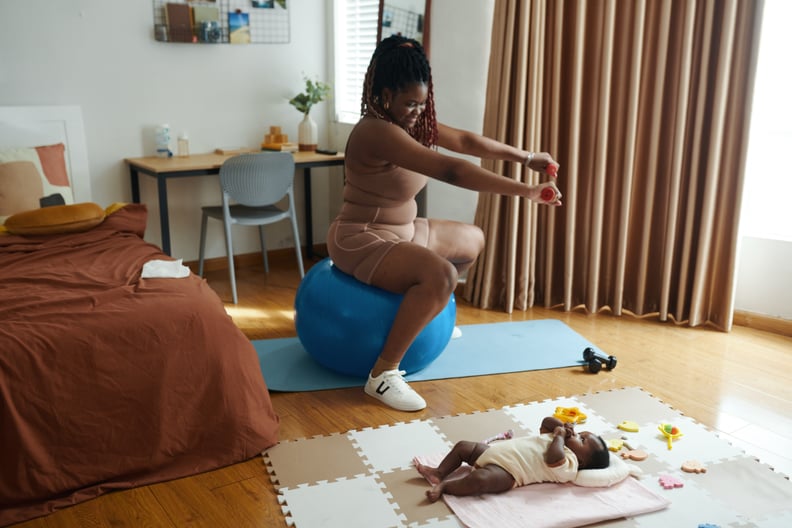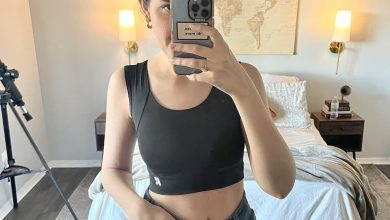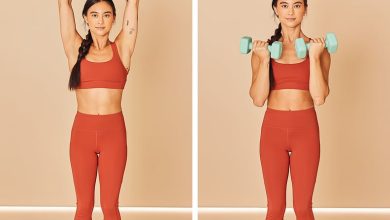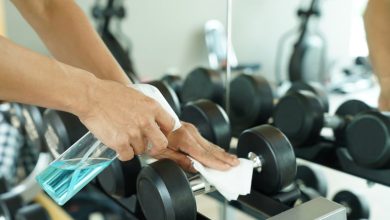The 75 Medium Is Centered Around a More Adaptable Wellness Reset

Now that we’ve overcome the hype of 75 Hard and established the more forgiving 75 Soft, it’s time for the 75 Medium challenge to shine. 75 Medium is exactly what it sounds like: an in-between approach to the family of viral wellness challenges. It sits smack dab in the middle of the intense, all-consuming nature of 75 Hard and the flexible 75 Soft.
“The 75 Medium approach encourages healthy habits across a variety of wellness pillars and is less extreme than other viral challenges, while still providing motivation, accountability, and direction,” says Mel Grauds, certified personal trainer and founder of MELROSE Training.
If you’re looking for a more adaptable wellness reset, keep reading to learn more about the 75 Medium — including the 75 Medium rules, how it compares to the 75 Hard, and what experts really think about starting these challenges in the first place.
Experts Featured in This Article:
Mel Grauds, MD, is a certified personal trainer and founder of MELROSE Training.
Christopher Gagliardi, MD, is an ACE-certified personal trainer and health coach.
What Is the 75 Medium Challenge?
75 Medium is a physical and mental wellness challenge that provides recommendations for movement, diet, and personal development that have to be followed for 75 days straight. The general approach for all three challenges – 75 Hard, Medium, and Soft – is that if you break any of the rules, you have to restart on day one. The goal of this is to make sure you commit and reap the full benefits of the health reset.
What Are the 75 Medium Challenge Rules?
Unlike the 75 Hard and 75 Soft challenges, 75 Medium doesn’t have one clear set of rules or person spearheading it, so the rules vary slightly depending on the challenge participant. This is a great perk of the 75 Medium challenge, because it makes the challenge particularly adaptable to you. Below is the general base list of rules, compiled by trainers Grauds and Gagliardi.
- Hydrate: Drink half your bodyweight in ounces of water each day.
- Exercise: Work out for 45 minutes every day.
- Diet: Stick to your chosen diet 90% of the time, without cheating, and without consuming alcohol.
- Personal Development: Read or listen to ten minutes of something inspirational, like a personal development podcast or self-help book every day.
- Mindfulness: Meditate or pray for 5-10 minutes every day.
- Take a picture: The challenges differ on this, but most 75 Medium practitioners take a progress picture every day.
How Does the 75 Medium Differ From 75 Hard and 75 Soft?
If you want to compare the 75 Medium rules to its relatives, 75 Hard and 75 Soft, we’ve broken down the rules below:
75 Hard Rules
- Follow a diet, any diet
- No alcohol, and no cheat meals
- Two 45-minute workouts per day; one has to be outside
- Take a progress picture every day
- Drink one gallon of water per day
- Read 10 pages of a book
75 Soft Rules
- Eat well, and only drink on social occasions
- Train 45 minutes a day, taking one day off per week for active recovery
- Drink one gallon of water per day
- Read 10 pages of any book every day
What Do Experts Think of the 75 Medium Challenge?
“The 75 Medium challenge could be a great way to kickstart a more mindful and active life, but I’d recommend using it as a foundation for building long-term, personalized habits that fit seamlessly into your routine, rather than an absolute must-follow guide,” says Glauds. While the structure of a challenge can be helpful to build new routines, both trainers agree that strict rules often create an “all-or-nothing” mindset, where missing a day makes you feel like a total failure and can lead to losing motivation and abandoning the challenge altogether.
If you’re new to exercise, Glauds recommends starting with daily walks and 1-3 simple workouts per week, rather than diving into 45-minute workouts every single day. And instead of sticking to one strict diet, she recommends small habit changes like adding protein to meals and cooking at home more often, which can feel more positive and doable without the pressure of perfection. When habits feel achievable and realistic to your lifestyle, they’re more likely to stick, says Glauds. “Making small, sustainable changes and building habits tailored to your lifestyle is far more effective for long-term success than following a rigid set of rules.”
Gagliardi agrees: “For me, I don’t want my clients to be healthier for a specific number of days; I want them to find their way to lead a healthier lifestyle that can be maintained for a lifetime.” For some people, the rigidity of a specific challenge can be a great thing, but for others, it’s important to remember that you can improve your health by making small changes as well: “You can improve your nutrition one meal, and even one bite, at a time, and you can improve your fitness by doing bouts of physical activity of any duration,” he says.
Additionally, he warns, you should always be wary of trends offering a quick fix and consider whether that fix will actually lead to lasting behavioral change, or if it just offers temporary solutions.
Kaley Rohlinger is a freelance writer for PS who focuses on health, fitness, food, and lifestyle content. She has a background in the marketing and communications industry and has written for PS for over four years.



